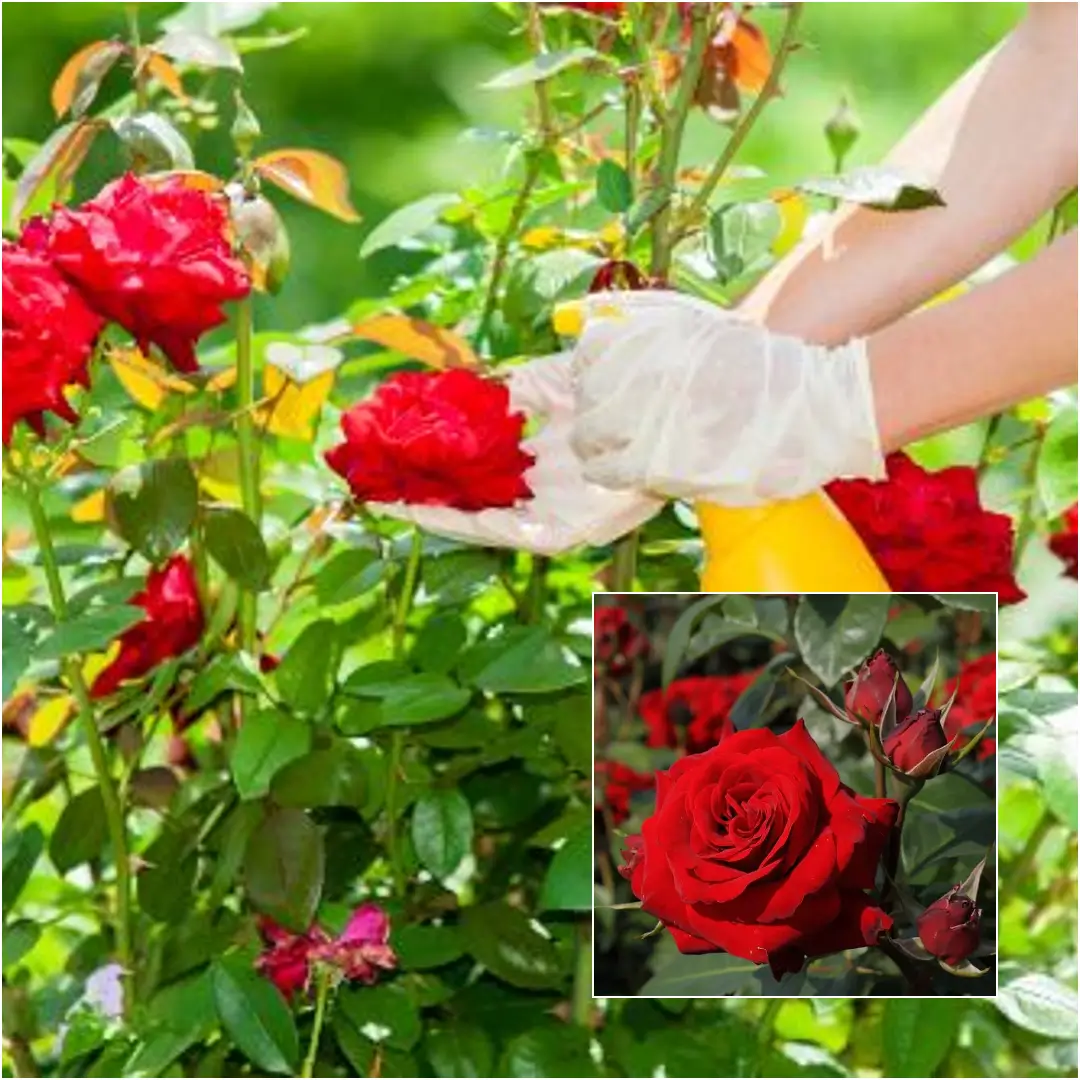Care for roses can seem like a daunting task, but with the right knowledge and approach, you can cultivate these stunning blooms effortlessly. Whether you’re nurturing bare root roses or tending to established plants, this comprehensive guide on how to grow roses and care for them will help you keep your garden thriving throughout the year. If you want to learn how to care for roses successfully, let’s dig into the nitty-gritty of rose care, making it as easy and enjoyable as possible!
Understanding Roses: The Basics
Before diving into the specifics of care for roses, it’s essential to understand what makes these flowers unique. Roses come in various types, including hybrid teas, floribundas, climbing roses, and more, each requiring specific care for optimal growth.
But why choose roses? Their vibrant colors, intoxicating fragrances, and timeless appeal make them a favorite in gardens around the world. The care for roses is essential to maintaining their beauty and ensuring they thrive. Think about it—what’s more delightful than wandering through a garden filled with roses, their petals glistening with dew? It’s a sight that can lift anyone’s spirits!
Growing Roses from Bare Root
Starting with bare root roses can be a rewarding experience, especially when you see them bloom into beautiful plants. Here’s a step-by-step guide on how to care for roses right from their roots!
Re-hydration: The Key to Success
When you first receive your bare root roses, they may look a bit sad—don’t worry, that’s normal! Understanding the care for roses at this stage is crucial to bringing them back to life. Here’s how to do it:
- Soak the Roots: Immerse the roots in a bucket of water for 2 hours before planting. This step is crucial as it rehydrates the roots after their journey, but remember not to exceed 12 hours of soaking.
Imagine this step as giving your roses a refreshing drink after a long flight! They’ll thank you by growing beautifully.
Planting Instructions: Getting it Right
The next step in how to care for roses involves planting them properly. Here’s what you need to know:
- Hole Size: Dig a hole that’s 40 cm wide and 40 cm deep. This allows enough space for the roots to spread and establish themselves.
- Sunlight Requirement: Roses thrive best with at least 6 hours of sunlight per day. So, consider their location wisely—position them where they’ll bask in the sun.
Planting Process: Step-by-Step
- Choose the Right Rose: Select a rose with at least 3 healthy stems. Healthy plants are more likely to flourish!
- Soak the Container and Roots: Before planting, soak the container and roots in tepid water to ensure they are thoroughly wet. This is essential for promoting strong root growth.
- Dig the Hole: Make the hole larger than the root ball, ensuring enough depth to plant the rose up to the crown level.
- Loosen the Soil: Use a garden fork to loosen the soil at the bottom and sides of the hole. This helps the roots spread out more easily.
- Fill with Potting Mix: Add some rose planting mix at the base of the hole for added nutrients.
- Position the Rose: Place the rose in the hole, ensuring its best side faces the direction where it will be viewed most. After all, you want your garden to be visually stunning!
- Fill and Water: Fill around the roots with the planting mix, firming it without compacting too much. Finally, water well to help the roots settle.
Remember, the care for roses you provide at this stage will set the foundation for a thriving rose bush!
Pruning and Deadheading Roses: Keeping Them Healthy
Once your roses are planted and growing, regular maintenance is crucial. This brings us to pruning and deadheading, two key aspects of how to care for roses effectively.
Timing is Everything
Timing your pruning correctly is essential for healthy blooms:
- Late Winter Pruning: For most roses, the best time to prune is during late winter, typically between mid-February and March. This is when the plants are dormant, making it easier to shape them.
- Climbing and Rambling Roses: Prune these types after flowering in late autumn or early winter.
- Shrub Roses: If they bloom once during the season, prune in late summer. For those that bloom throughout, prune them in late winter.
Deadheading: Encouraging New Blooms
Deadheading is the process of removing spent blooms to encourage further flowering. Here’s how to do it effectively:
- Anytime During Summer: Cut back dead flowers whenever you notice them. This helps maintain the attractiveness of your plants and stimulates new growth.
- After Frost: Trim stems after the first frost to prevent snapping in windy conditions. Keeping your roses well-shaped is crucial for their health.
Pruning Technique: A Step-by-Step Guide
To prune your roses properly, you’ll need a few tools and techniques:
- Gather Your Tools: Have a pair of sharp secateurs and some thick gardening gloves ready.
- Inspect the Bush: Check for spent blooms—focus on those that have lost color and are wilting.
- Cutting Back: Cut just above the nearest leaves of the wilting flowers. Dispose of the blooms in your compost pile or green bin.
- Locate the Bud Eye: For future growth, look for a healthy bud eye just above the first set of five leaves. This is where new growth will emerge.
- Make Your Cut: Holding your secateurs at a slight angle, make a clean cut about ¼ inch (6 mm) above the bud eye. Cutting at an angle helps prevent water from pooling, reducing the risk of disease.
- Collect Trimmings: Gather the trimmed flowers for composting or decorative uses.
- Repeat Regularly: Keep an eye on your rose bush and deadhead throughout the growing season. Regular care will reward you with a more vibrant display!
Additional Tips for Rose Care: Beyond the Basics
While planting and pruning are vital components of how to care for roses, there are additional tips that can make a significant difference in your rose gardening success.
Feeding Your Roses
To ensure healthy growth and continuous flowering, feed your roses regularly. Here’s what to consider:
- Liquid Plant Food: Use a high-performance liquid plant food like Westland Rose High Performance Liquid Plant Food. This will provide essential nutrients to keep your roses thriving.
- Mulching: At the start of the growing season, mulch around your roses with compost or well-rotted manure. This will help retain moisture and add vital nutrients to the soil.
Hydration: Watering Tips
Watering is a crucial aspect of how to care for roses. Here are some best practices:
- Deep Watering: Water your plants deeply, ensuring that the moisture reaches the root zone. This encourages deeper root growth.
- Let it Dry: Allow the soil to dry slightly between waterings. Overwatering can lead to root rot, so finding that balance is essential.
Mulching for Moisture Retention
Applying a layer of mulch around the base of your rose plants is incredibly beneficial:
- Benefits of Mulch: Mulch helps retain soil moisture, suppresses weed growth, and regulates soil temperature. It’s a win-win situation for your plants!
Preventing Pests and Disease
Healthy roses can still fall victim to pests and diseases. Here’s how to keep your roses safe:
- Use Bug Spray: Implement preventative measures with a bug spray like Rose Guard. This will help control pests such as aphids, spider mites, and whiteflies.
- Disease Management: The same spray combats diseases like powdery mildew. Applying it throughout the year can give your roses the protection they need.
Your Journey to Beautiful Roses
Caring for roses is a delightful journey filled with vibrant blooms and sweet fragrances. By understanding how to care for roses—from planting and pruning to feeding and pest control—you can ensure your garden flourishes beautifully.
With the tips and techniques outlined in this guide on care for roses, you’ll be well on your way to creating a stunning rose garden that will not only enhance your landscape but also bring joy and inspiration to your life. Remember, every rose has its thorn, but with a little patience and love, the rewards are simply breathtaking! So grab your gardening gloves, get outside, and start your rose-growing adventure today!
FAQs
How do you keep roses healthy?
To keep roses healthy and ensure proper care for roses, make sure they receive adequate sunlight (at least 6 hours a day), water deeply but allow the soil to dry slightly between waterings, and feed them with a balanced rose fertilizer during the growing season. Regularly inspect your plants for pests and diseases, and take prompt action to manage any issues that arise.
How do you keep roses alive?
Keeping roses alive involves providing the right growing conditions as part of your care for roses routine. This includes well-drained soil enriched with organic matter, consistent watering, and proper pruning. Additionally, mulching around the base of the plants helps retain moisture and suppress weeds. Protecting roses from extreme weather and providing support for climbing varieties will also contribute to their longevity.
How do you keep roses blooming?
To encourage continuous blooming as part of your care for roses routine, deadhead spent flowers regularly to promote new growth. Fertilize your roses every 4-6 weeks during the growing season with a high-performance plant food. Ensure your roses receive enough sunlight and water, and consider seasonal pruning to stimulate healthy growth and flowering.
Do you cut off the dead roses?
Yes, you should cut off dead roses as part of your care for roses routine, a process known as deadheading. Removing spent blooms not only keeps your plant looking tidy but also encourages the growth of new flowers. Deadheading can be done anytime during the summer; just make sure to cut above the nearest leaf to promote healthy new growth.


